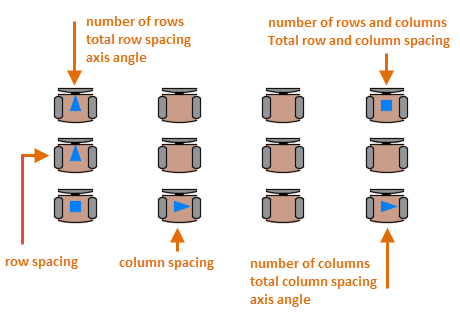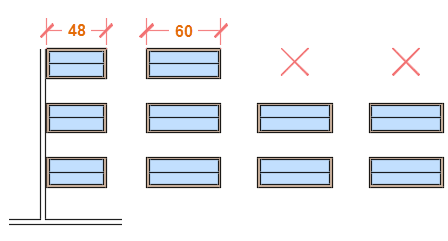You can create copies of selected objects to be arranged in a pattern called an array.
After you select the objects that you want to duplicate, which are called the source objects, you choose the arrangement pattern. There are three types of arrays:
- Rectangular
- Path
- Polar
Here's what these arrays might look like when applied to arranging display tables:

Each element of the array is called an array item, which can be composed of several objects. You can also specify a block to be the source object of an array.
Associative and Non-Associative Arrays
You can choose whether an array by default is associative and non-associative in an option in the ARRAY command.
- Associative arrays have the advantage that they can be easily modified later. Array items are contained in a single array object, similar to a block. You can change the number of these items and their spacing in an associative array. You can edit the array properties, such as the spacing or number of items using either the grips on the array or the Properties palette.
- Non-associative arrays become independent objects after you exit the ARRAY command.
Modify the Items in an Associative Array
With associative arrays, you can perform edits directly using grips, with grip menu options that appear when you hover over a grip, or by using the ARRAYEDIT command from the contextual tab or at the Command prompt. For example, here are the primary controls for a rectangular array of chairs. Path arrays and polar arrays have similar controls.

After an associative array is created, you can still modify the items in the array as follows:
- Edit a source item of the array. All instances of the source item will be updated automatically.
- Remove one or more items in the array.
- Replace one or more items in the array with selected objects. You can also add or delete objects associated with the array item.
In the example, the first column of display tables was replaced by a shorter version, and two of the tables in the top row were deleted.

Even after these changes, the array remains associative, and the spacing and angles between the items can still be changed dynamically in a single operation.